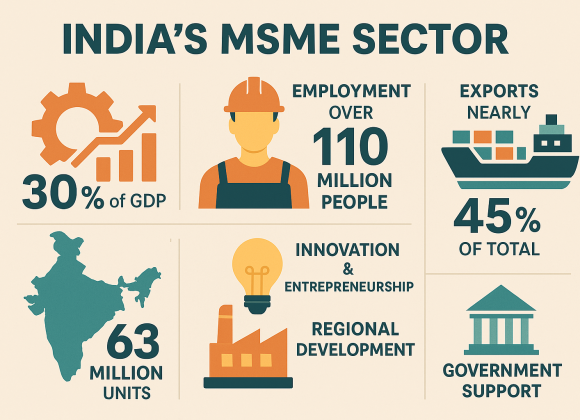Over the past two decades, China earned its title as the “world’s factory,” powering global supply chains with its massive industrial base and low-cost production. But as wages in China rise, trade tensions escalate, and multinational companies push for supply chain diversification, a new player is stepping into the spotlight—Vietnam.
From Nike to Samsung, global giants are pivoting to Vietnam not just for cheaper labor, but for its skilled workforce, strategic location, and business-friendly policies. According to Vietnam Briefing, the country has seen record-breaking foreign direct investment in recent years, particularly in electronics and textiles. What’s more, Vietnam’s participation in key free trade agreements, like the CPTPP and EVFTA, gives it preferential access to major markets—a clear advantage over regional competitors.
As The Wall Street Journal and Reuters have noted, Vietnam isn’t just a fallback option—it’s becoming a strategic cornerstone in global manufacturing. In a world where resilience, agility, and cost-efficiency are more important than ever, Vietnam is rising to meet the moment.
1. Cost-Effective Labor Force

Vietnam offers a significant cost advantage over China. As of recent reports, the average labor cost in Vietnam is approximately $3 per hour, compared to $6.50 in China. This cost efficiency extends beyond wages, encompassing utilities and industrial space, making Vietnam an attractive destination for manufacturers seeking to optimize expenses.
2. Young and Skilled Workforce

Vietnam boasts a youthful and increasingly skilled labor force. With a population where a significant portion is between the ages of 18 and 60, the workforce is not only abundant but also adaptable to complex manufacturing tasks, including high-level technical assembly and smartphone production.
3. Robust Economic Growth
Vietnam’s economy has demonstrated resilience and growth, particularly in the manufacturing sector. In 2024, the country’s GDP grew by 7.09%, with manufacturing and processing industries expanding by 6.98% in the first quarter. This growth is fueled by increasing domestic consumption, heightened foreign investment, and rising export demand.
4. Strategic Trade Agreements
Vietnam’s participation in key trade agreements, such as the Comprehensive and Progressive Agreement for Trans-Pacific Partnership (CPTPP) and the EU-Vietnam Free Trade Agreement (EVFTA), enhances its appeal to international businesses. These agreements provide Vietnamese exports with preferential access to major markets, reducing tariffs and fostering trade relations.
5. Increasing Foreign Direct Investment (FDI)

Vietnam has seen a surge in foreign direct investment, particularly in the manufacturing sector. In January 2025 alone, foreign investment reached over $4.33 billion, marking a significant contribution to the country’s export-driven economy.
6. Geopolitical Shifts and Supply Chain Diversification
Global geopolitical dynamics, including trade tensions and tariff impositions, have prompted companies to diversify their supply chains. Vietnam has benefited from this shift, attracting manufacturers seeking alternatives to China. The country’s stable political environment and strategic location in Southeast Asia further enhance its attractiveness as a manufacturing base.
Challenges Facing Vietnam
While Vietnam’s rise as a manufacturing powerhouse is impressive, the transition from a low-cost alternative to a full-fledged replacement for China is not without hurdles. Companies considering or already operating in Vietnam must contend with several systemic and structural challenges.
1. Infrastructure Limitations
Vietnam has made significant infrastructure improvements, especially in industrial hubs like Ho Chi Minh City and Hanoi. However, it still trails China’s advanced logistics network, which includes high-speed rail, mega-ports, and highways. Many Vietnamese regions face logistical bottlenecks due to underdeveloped roads and limited port capacity. According to World Bank logistics performance rankings, Vietnam ranked 39th globally in 2023, a respectable showing, but significantly behind China, which remains in the top 15. These infrastructure gaps can cause delays and higher costs, particularly for just-in-time manufacturing and exports.
2. Skill Gaps in the Workforce
Vietnam’s youthful and plentiful workforce is a key advantage, but the shift toward high-tech manufacturing sectors such as electronics and automotive requires advanced technical skills. Companies like Samsung and Intel often invest heavily in training or bring in foreign talent due to a shortage of local expertise. A 2023 report from ManpowerGroup Vietnam revealed that more than 80% of foreign-invested enterprises cite skill mismatches as a major operational challenge. Although government initiatives like “Made in Vietnam 4.0” aim to improve STEM education and vocational training, progress must accelerate to keep pace with the evolving needs of sophisticated global manufacturing operations.
3. Capacity Constraints
Vietnam’s limited manufacturing scale remains a key challenge. Despite a surge in investments in sectors like textiles, electronics, and footwear, it lacks the vast, integrated industrial ecosystem that China has built. China’s manufacturing hubs support rapid prototyping and mass production, while Vietnam often relies on imported raw materials—mainly from China—leading to longer lead times and reduced self-sufficiency. In 2024, Vietnam accounted for approximately 6% of global electronics exports, compared to China’s 26%, showing just how far Vietnam still has to go in terms of scale (Statista). As more firms shift operations to Vietnam, capacity constraints may strain labor, utilities, and environmental resources unless infrastructure and industrial ecosystems expand accordingly.
Conclusion
Vietnam’s combination of cost-effective labor, a skilled workforce, robust economic growth, strategic trade agreements, increasing foreign investment, and favorable geopolitical positioning solidify its status as a rising manufacturing powerhouse. As companies continue to seek resilient and diversified supply chains, Vietnam stands out as a compelling alternative to China, poised to play a central role in the future of global manufacturing.





